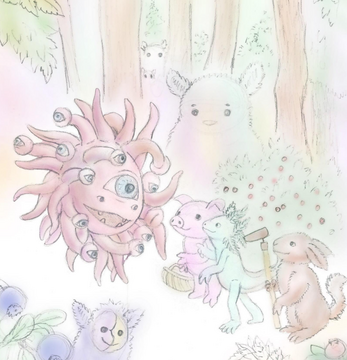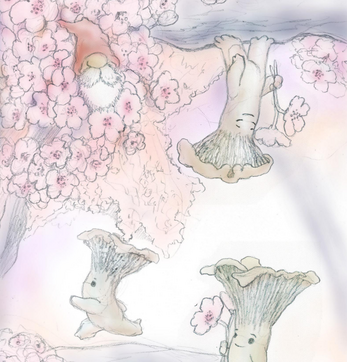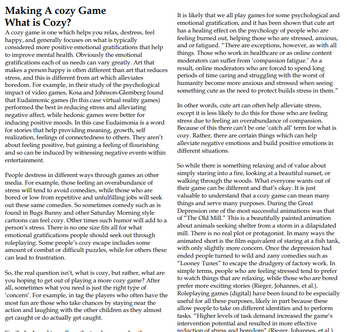In the modern world the notion that witches ride on broomsticks is so iconic we perhaps only occasionally think how odd it is. For once witches could fly without any help or on the backs of animals such as goats or were carried by the fairies and other beings. The first mention of a person using a broom to fly comes from a witch trial near the end of the Medieval (it was the Early Modern when most of the witch trials were conducted). In 1453
a priest was forced to confess to flying on a broom to meet the devil, but no
one can know for certain why he or later depictions of witches involved brooms
for certain.
There
are three sources of speculation I will discuss but none are absolute matches as there is no direct path to be found anywhere between the reasons witches road brooms and their use of brooms or broom like objects in rituals.
First and is that in Classical Rome brooms
were used as rituals for to drive away Sylvanus by a person who represented a
household deity in a Roman ritual (Dorcey), Cleanliness was generally important
to protecting people’s homes, if a house was dirty, or didn’t have clean water
a vampire could enter it without permission. Fairies too would give blessings
to houses that had been swept but become dangerous and feral if a house was
left unsweapt. Within this world of cleanness having the power to drive off
evil, and dirtiness having the power to corrupt good or invite evil, the broom
had very specific power.
Thus, brooms were frequently used by magical ritualists to gain the support of good fairies and to drive off evil fairies. Given the fact that many people would be hired or kidnapped by the fairies to do work for them, such as watching children and cattle, or cleaning their homes the broom might have been a tool that many people picked up before traveling/flying to fairy land.
Another idea comes from Carlo Ginzburg's book “Deciphering
the Witch's Sabbath” he states that certain people would send their souls “to the
realm of the dead, in the shape of an animal, on the back of animals or other
magical vehicles. The gandus or wand of the shamans of Lapland
resembles, on the one hand, the horseshoe-shaped wand used by the Buryat shaman
and, on the other, the broomstick on which the witches claim they rode
to the Sabbath. The folkloric nucleus of the Sabbath — magic flight and
metamorphosis — seems to derive from a remote Eurasian substratum."
In
essence it seems that the broom might have been a stand in for the idea of
horses, an idea which comes from the Uralic people who lived in places like
Hungry, Livonia, and Siberia. Certainly, many fairytale motifs were passed
between the Uralic people of Easter Europe and the people of Central Europe.
For example, the idea of certain witch like creatures being blind (as in Hansel
and Gretel) and being tricked with a chicken bone is present in Sami story, as
well as a story from Mari-El, in addition to the German one.
Certainly, fairies in Scotland would often fly by crying "Horse and Hattock" and people could follow after them. Although a stick wasn't always involved in this it could sometimes be. In his article on the Trolls and Hillfolk of the Finns and Picts, Alan Bruford states that "the reference to riding on a bulwand (mugwort or dock stem) is a local interpretation of the 'horse.'"
It's
important to remember at this point that witches were often believed to send
their soul out of their body to go to fairyland, to meet with the fairies, the devil, to
follow some divine being, etc. This was a symbolic and spiritual world and a wand, a weed, or a broom could have contained the spirit of a horse for use in this world, or could have been turned into a horse in it.
It might
also be that the broom was seen as a weapon used by evil witches when battling
the good werewolves and witches, as Ginzburg also mentions that: “In 1692 at
Jürgensburg in Livonia an eighty-year-old man named Thiess… confessed to the
judges interrogating him that he was a werewolf. Three times a year, he said,
on St. Lucy’s night before Christmas, the night of St John, and of the
Pentecost, the werewolves of Livonia go into hell, ‘at the end of the sea’ (he
later corrected himself: ‘underground’), to fight with the devil and the
sorcerers)… the werewolves pursue the devil and sorcerers, who are armed with
broomsticks wrapped in horse tails…. At stake in the battles was the fertility
of the fields: the sorcerers steal the shoots of the grain, and if they cannot
be wrested from them there will be famine.”
The Benandanti,
witches from Northern Italy, would send their souls from their bodies and carry
bundles of fennel stalks in their battles against evil witches and the devil in
order to protect the fertility of the land. Their enemies, evil witches, fought
using Sorghum, also known as broomcorn because they were used to make brooms.
Sorghum was generally considered a lesser grain (millet), although it could
also be a weed if it grew in the fields of more desirable crops. It is
difficult to say, however, which came first, the use of it by evil witches or
the use of brooms and while Ginzburg mentions the evil sorcerers using sorghum
stalks in his book on Benandatai, he doesn’t mention this connection.
This
brings us to a last point, what has become the most popular claim, that witches
rode brooms in connection to a fertility ritual. This was written in a book by
an anthologist but they gave no sources for this idea and I have yet to find
any original source. This doesn’t mean that such sources don’t exist exactly,
but no one who mentions this idea cites any original source. As a result this
idea is purely speculative based on their own wishes and the general old obsession
with the idea that everything involved fertility rituals. But spiritual belief
was often much more complex than, everything is about fertility. Even those
things that were about fertility were often related to more than just this idea.
For example, it is true that the shamans of Siberia would frequently travel to
the spirit world to guarantee a good run of salmon, a large flock of geese, or
large herds of reindeer, thus their wand like objects might have been connected
to fertility rituals in this sense, but in another they often represented a
horse or other spirit animal which they rode up. At the same time the other two
mentions of the broom in actual lore connected it to something used by the
sorcerers who were trying to destroy the crop, rather than the witch figures
who were fighting for the fertility of the land. In Rome and among the fairies
the broom was literally connected to cleanliness and used as a way to drive off
or protect against evil spirits, vampires, gods that were acting feral, etc. In this sense the broom was connected to the idea of fighting against disease, rather than fertility.
Sources:
Peter T.
Leeson, Jacob W. Russ, Witch Trials, The Economic Journal, Volume
128, Issue 613, 1 August 2018, Pages 2066–2105, https://doi.org/10.1111/ecoj.12498
Dorcey,
Peter F. (1989) The Role of Women in the Cult of Silvanus. Numen Vol. 36, Fasc.
2 (Dec., 1989), pp. 143-155
Ginzburg,
Carlo (1966) The Night Battles: Witchcraft and Agrarian Cults in the Sixteenth
and Seventeenth Centuries. Routledge.
Ginzburg, C. (2004). Ecstasies:
Deciphering the Witches' Sabbath. United States: University of
Chicago Press.
Bruford, Alan, Trolls, Hillfolk, Finns, and Picts: The Identity of the Good Neighbors in Orkey and Shetland, from the book "The Good People: New Fairylore Essays" edited by Peter Narv ez





















